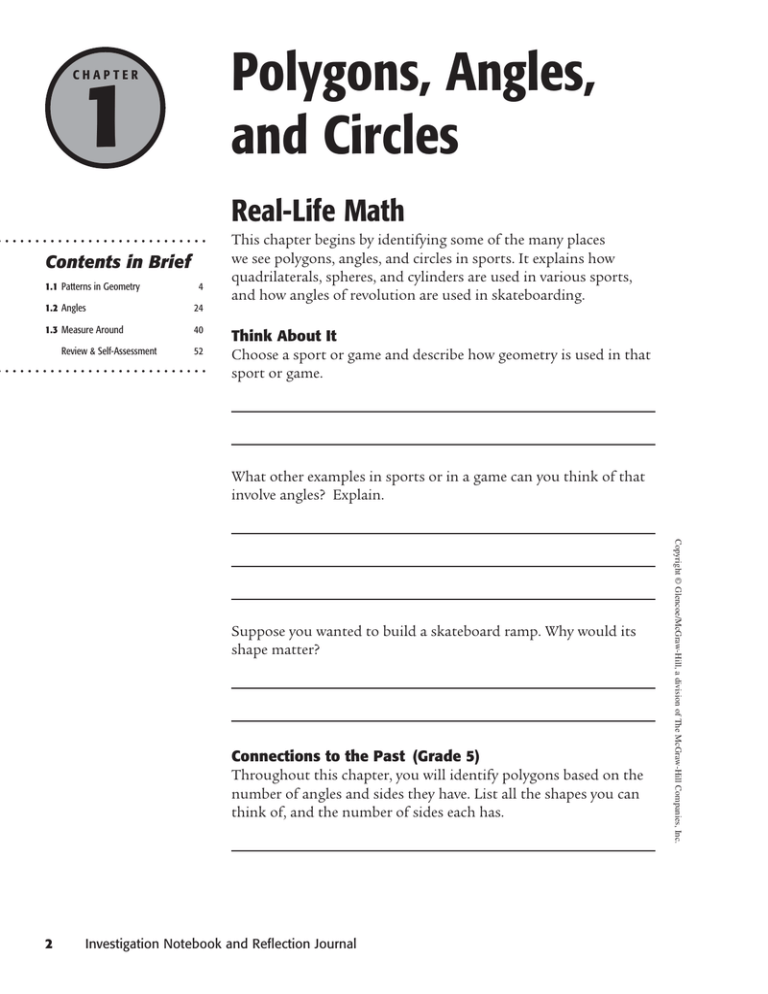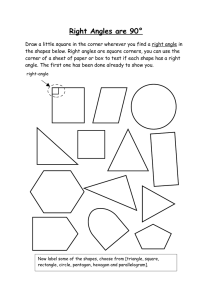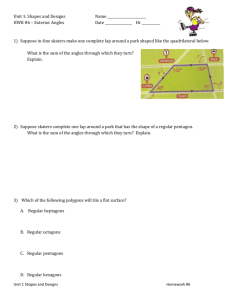Investigation Notebook and Reflection Journal
advertisement

Polygons, Angles, and Circles CHAPTER 1 Real-Life Math Contents in Brief 1.1 Patterns in Geometry 4 1.2 Angles 24 1.3 Measure Around 40 Review & Self-Assessment 52 This chapter begins by identifying some of the many places we see polygons, angles, and circles in sports. It explains how quadrilaterals, spheres, and cylinders are used in various sports, and how angles of revolution are used in skateboarding. Think About It Choose a sport or game and describe how geometry is used in that sport or game. What other examples in sports or in a game can you think of that involve angles? Explain. Connections to the Past (Grade 5) Throughout this chapter, you will identify polygons based on the number of angles and sides they have. List all the shapes you can think of, and the number of sides each has. 2 Investigation Notebook and Reflection Journal Copyright © Glencoe/McGraw-Hill, a division of The McGraw-Hill Companies, Inc. Suppose you wanted to build a skateboard ramp. Why would its shape matter? Vocabulary Determine whether each statement refers to polygons (P) or circles (C). ▼ A two-dimensional closed geometric figure with at least one angle measuring 180° is concave. ▼ These figures are named according to the number of sides and vertices each has. ▼ Circumference can be calculated using the formula C = 2πr. ▼ P or C A diameter is a chord that passes directly through this figure’s center. ▼ Statement When these figures have sides that are all the same length and angles that are all the same size, they are called regular. Copyright © Glencoe/McGraw-Hill, a division of The McGraw-Hill Companies, Inc. Family Letter Which shapes did you find on your walk? What shapes did you find that you were not expecting to see? Draw some of the shapes you saw below. Shapes I saw: What figures did you see in the building or house? Why do you think the building is shaped the way it is? Chapter 1 Opener 3

